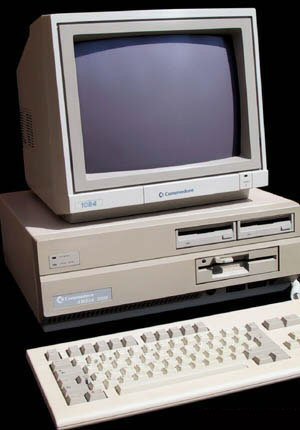Please wait a few moments while we process your request

Mona Jimenez
The Artist Instrumentation Database Project
My learning curve about relational databases was quite steep, so I wanted to make a database that would not be so complex it became intimidating. (In this I am not sure I succeeded; the template, with over 50 fields, will still be daunting to some. One needs to remember, of course, that entering data into all fields may not be appropriate or feasible.) The structure of the database is fairly simple, with only two linked tables: one for tool description and one for organizations and individuals. Thus, users can save time by entering a particular person or company only once and pulling these names into certain fields from the resulting list, i.e., the “Inventor/Designer” field. Of course, those familiar with database design should feel free to adapt the template, applying the same principles to create other tables to link to texts, video titles, pictures, and other resources.
The impetus for creating the whole and part structure was the opposite. In this case, I felt that working with only one record per device sometimes resulted in information that was too basic. In the case of the Sandin Image Processor, numerous versions were built, and in some cases the builders added their own features or created additional hardware to expand the IP’s range. For example, Dick Sippel’s version includes a unit he designed called the Key Stacker. I felt the Key Stacker merited its own record, and the way to accomplish that was by representing it both as a whole (within the record for the Sandin Image Processor – Sippel Version) and as a part (the Key Stacker record).
Again, users of the database may chose to abandon the complexity entailed in parts and catalog everything at one level – the whole level. The template attempts to be flexible enough to accommodate the needs of various institutions or collectors.
I offer the template not as a definitive version, but rather to provide one example of a database structure for electronic devices and to encourage dialogue about documentation and user adaptations. Users are encouraged to try the template and to send feedback to me about its usefulness and subsequent adaptations. At least for the short-term, I am committed to acting as a clearinghouse for those using and adapting the database. I can also assist users who may have questions about the template and instructions.
Following on the model of the media cataloging template distributed by Independent Media Arts Preservation (1), there is tremendous value in utilizing a standard database template for multiple collections. In the future, separate inventories could be merged or linked through a common interface, allowing users to search for artist instruments/devices held in numerous collections. Such access may facilitate the study of these devices by researchers, educators, artists, preservationists and others, leading to a more comprehensive history of the devices and unique forms of artistic practice. Further study will ultimately aid in the preservation of the devices themselves and similar works that utilize or incorporate technology. However, it remains to been seen if this is a desirable or practical outcome.
In the meantime, efforts are underway to use the template to create an Equipment Registry to document commercially-produced devices needed for the playback of obsolete media formats. These playback decks – such as Betamax video players - are critical for re-mastering older works. During the spring of 2005, Jeff Martin, a graduate student in the Moving Image Archiving and Preservation Program at New York University, will be working with Independent Media Arts Preservation to conduct feasibility studies for a Registry. For more information, please contact IMAP at [email protected].
The Artist Instrumentation Database Project would not have happened without the support of the Researcher-in-Residence Program of the Daniel Langlois Foundation and the leadership and support of Jean Gagnon. I am very grateful for the time, funding, archival resources, and personal attention given to be by the Foundation and its excellent staff. I could not have asked for a better guide through the Vasulka Archives than Vincent Bonin, who brought much thoughtfulness, knowledge, passion, and practicality to my task. Alain Depocas built the first versions of a template for me to tinker with, trained me in database structure, expanded the input structure, and gave me very good advice. The database as it exists would not have been possible without his ideas, direction and time, for which I am very grateful. Feedback from Sherry Miller Hocking and Pip Laurenson was also very valuable and stimulated me to think in new ways, while keeping me on track.
Thanks also go to the following people who assisted me at various points in this project: Dan Sandin; Phil Morton; Bill Etra; Steve Rutt; Jon Cates (www.criticalartware.net); Bob Snyder; Marcia Rock; Jane Veeder; Kathy High; Hank Rudolph (Experimental Television Center); Claudia Cumbie-Jones; Lance Ford Jones; Benton-C Bainbridge; Bozena Kornas,Jim Johnson and Anthony Pacey (Canadian Science and Technology Museum); Richard Gagné (National Gallery of Canada; Pierre Véronneau (Cinémathèque québécoise), Eric Legendre, Jacques Perron, Guylaine Courcelles, Dominique Fontaine, Howard Weinburg, and Andrew Hampsher.
The impetus for creating the whole and part structure was the opposite. In this case, I felt that working with only one record per device sometimes resulted in information that was too basic. In the case of the Sandin Image Processor, numerous versions were built, and in some cases the builders added their own features or created additional hardware to expand the IP’s range. For example, Dick Sippel’s version includes a unit he designed called the Key Stacker. I felt the Key Stacker merited its own record, and the way to accomplish that was by representing it both as a whole (within the record for the Sandin Image Processor – Sippel Version) and as a part (the Key Stacker record).
Again, users of the database may chose to abandon the complexity entailed in parts and catalog everything at one level – the whole level. The template attempts to be flexible enough to accommodate the needs of various institutions or collectors.
I offer the template not as a definitive version, but rather to provide one example of a database structure for electronic devices and to encourage dialogue about documentation and user adaptations. Users are encouraged to try the template and to send feedback to me about its usefulness and subsequent adaptations. At least for the short-term, I am committed to acting as a clearinghouse for those using and adapting the database. I can also assist users who may have questions about the template and instructions.
Following on the model of the media cataloging template distributed by Independent Media Arts Preservation (1), there is tremendous value in utilizing a standard database template for multiple collections. In the future, separate inventories could be merged or linked through a common interface, allowing users to search for artist instruments/devices held in numerous collections. Such access may facilitate the study of these devices by researchers, educators, artists, preservationists and others, leading to a more comprehensive history of the devices and unique forms of artistic practice. Further study will ultimately aid in the preservation of the devices themselves and similar works that utilize or incorporate technology. However, it remains to been seen if this is a desirable or practical outcome.
In the meantime, efforts are underway to use the template to create an Equipment Registry to document commercially-produced devices needed for the playback of obsolete media formats. These playback decks – such as Betamax video players - are critical for re-mastering older works. During the spring of 2005, Jeff Martin, a graduate student in the Moving Image Archiving and Preservation Program at New York University, will be working with Independent Media Arts Preservation to conduct feasibility studies for a Registry. For more information, please contact IMAP at [email protected].
The Artist Instrumentation Database Project would not have happened without the support of the Researcher-in-Residence Program of the Daniel Langlois Foundation and the leadership and support of Jean Gagnon. I am very grateful for the time, funding, archival resources, and personal attention given to be by the Foundation and its excellent staff. I could not have asked for a better guide through the Vasulka Archives than Vincent Bonin, who brought much thoughtfulness, knowledge, passion, and practicality to my task. Alain Depocas built the first versions of a template for me to tinker with, trained me in database structure, expanded the input structure, and gave me very good advice. The database as it exists would not have been possible without his ideas, direction and time, for which I am very grateful. Feedback from Sherry Miller Hocking and Pip Laurenson was also very valuable and stimulated me to think in new ways, while keeping me on track.
Thanks also go to the following people who assisted me at various points in this project: Dan Sandin; Phil Morton; Bill Etra; Steve Rutt; Jon Cates (www.criticalartware.net); Bob Snyder; Marcia Rock; Jane Veeder; Kathy High; Hank Rudolph (Experimental Television Center); Claudia Cumbie-Jones; Lance Ford Jones; Benton-C Bainbridge; Bozena Kornas,Jim Johnson and Anthony Pacey (Canadian Science and Technology Museum); Richard Gagné (National Gallery of Canada; Pierre Véronneau (Cinémathèque québécoise), Eric Legendre, Jacques Perron, Guylaine Courcelles, Dominique Fontaine, Howard Weinburg, and Andrew Hampsher.
© 2005 FDL
(1) Independent Media Arts Preservation : http://www.imappreserve.org/cat_proj/



